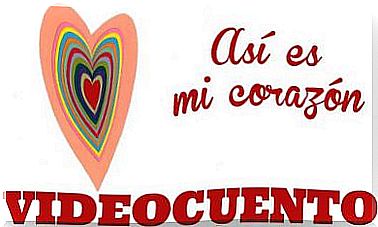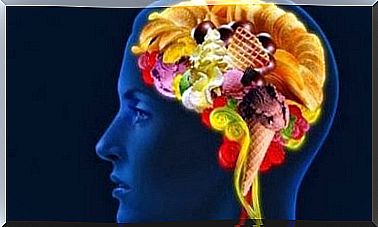3 Types Of Learning Strategies

Meaningful learning depends on both the teaching process and the way students process that information. Thus, if there is something that educational psychologists have always cared about, it is to optimize both dimensions to the maximum, to make those dynamics in the classroom richer, more productive and valid scenarios for everyone.
The main objective of learning strategies is therefore to make students become more effective learners. Exploration and research in this field has always provided us with different ways to achieve this. The three most famous learning strategies are mnemonic, structural, and generative. They are approaches that will undoubtedly be known to all of us because we have used them on more than one occasion.
There is also something that we cannot forget. Few challenges are as relevant as designing a study plan in an educational center with the learning strategies that will be applied in them. Defining them and making use of the most appropriate for students is something of great importance and worth knowing.
Mnemonic strategies
Mnemonic strategies are undoubtedly the most classic. This type of approach helps students memorize content such as specific facts or terms. For example, they are useful when remembering capitals, important dates, vocabulary of a language, etc. Thus, something we all know is that when it is necessary to memorize meaningless data, there is no better option than mnemonic strategies. The reason? They offer us a means of establishing some degree of significance.
The validity of these techniques has been widely validated, which is why they have been in use for a long time. Psychologist Paivio explained that these techniques work for three reasons:
- Dual coding: many of these strategies involve the use of non-verbal codes (images) alongside verbal codes (words). Which means that the same content is encoded in two different ways. According to connectionist principles this would facilitate access to information.
- Organization: another way of functioning of these strategies is to create a coherent context in which to fit the information. This allows the information to be related to each other, instead of being fragmented. For example, it is easier for us to remember a list of words if we form a sentence with them.
- Association: the formation of intense relationships between elements is also an option for meaningful learning. Strong associations help, because when one element of the two is seen, the other is easily remembered.

An example of a mnemonic strategy is the keyword method. This method is very useful when it comes to learning conflicting vocabulary in a foreign language. It consists of a phonetic and iconic link, for a detailed explanation.
On the other hand, it must be said that it is very common for this type of approach based on memorization to have some criticism or other. However, studies such as the one published in the Journal of Experimental Child Psychology and carried out at the University of Michigan, indicate that it is a basic pillar in educational processes. It is a way of enhancing memory and establishing knowledge. Although, it is necessary that it be combined with other educational strategies.
Structural strategies
The second type of educational strategies are structural ones. Its function is to stimulate active learning by encouraging students to mentally select relevant elements of information and relate them to each other in a structure. Here we find the techniques of making concept maps, flow charts or diagrams, etc.
Obviously, it is not enough for the teacher to tell the student to make outlines and summaries. These will only be useful if the student knows how to do them. That is why it is interesting and productive for teachers to instruct their students about its realization. The most difficult aspect of this training is teaching to detect the most relevant or significant aspects of a text or exhibition.
The effect that these techniques have on learning is readily apparent. When we organize the material in small ideas closely related to each other, it is easier to access it. Also by creating strong associations between those ideas, it will be easier to access the rest of the information in our memory.
Data and research, such as that carried out at the University of Melbourne, shows us that those students who use these techniques increase their performance considerably. In addition, they help to formalize an authentic understanding of the content, instead of rote and superficial learning. For this reason, it is interesting to incorporate these learning strategies into the classroom.
Generative strategies
With the above strategies, we have looked at ways to help students remember specific facts and organize them into structures; that is, they are techniques for dealing with new information that must be learned. However, another important aspect of learning is the integration of new content with previous knowledge. And this is where generative strategies come in.
EZ Rothkopf, a renowned educational psychologist, called those activities in which the student produces knowledge with the term “mathematics activities. ” Examples of these are taking notes, underlining, generating and answering questions or repeating aloud. These types of activities help deep understanding by forcing students to integrate their knowledge.

Many psychologists understand active learning as the generation by the student of the relationships between ideas. For this reason, generative strategies are a great tool to awaken this type of learning in students. Instructing students in how to take notes or how to ask themselves questions greatly facilitates deep understanding and integration of acquired knowledge.
As we can see, throughout the article we have seen and explored different learning strategies with great potential and usefulness in the classroom. Scientific investigation of instruction and education helps us achieve that active and deep learning that we seek in students. It would be a great mistake not to follow the guidelines and evidence provided by educational psychology.
On the other hand, and finally, if we ask ourselves now what type of educational strategy is the most valid, it is worth remembering something essential. There is no one approach more effective than others: all are useful, necessary and reliable. Educating is after all understanding the needs of each student and putting the best answers at their fingertips. Thus, each perspective shown here is part of the daily work of the students and teachers. Knowing how to empower them is key to optimizing learning.









